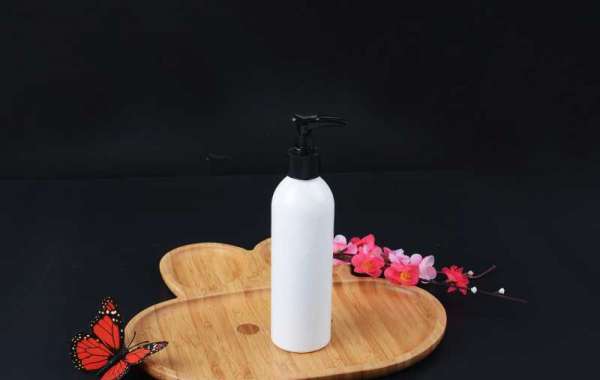Because bisphenol A (BPA) and polyethylene terephthalate (PET) are always present in the mass media of beverage packaging, beverage processors must manage a large amount of misinformation and maintain strict beverage safety standards. Although aware of consumer concerns, beverage manufacturers must insist on transparency and continue to assure consumers of product safety. The following are common questions that beverage and food manufacturers must answer to assure their customers the safety of their products.
So, how much of what we have read about the safety of Beverage Bottle containers is true, or is it just a simple modern urban myth?
“Many people don’t realize that the U.S. Food and Drug Administration (FDA) strictly regulates bottled water as packaged food. The FDA has established strict quality standards and clear identity standards for bottled water that protects consumers. The FDA is also responsible for ensuring that all packaging is provided. The safety of food materials (including bottled water). All plastics (and other materials) used in contact with food or beverages are regulated by the FDA to help ensure their safety," said President and Chief Executive Officer of the International Bottled Water Association (IBWA) Officer Joe Doss (Joe Doss) said.
A large portion of bottled water is packaged in plastic containers, including containers made of PET, polycarbonate, and high-density polyethylene (HDPE). Although aluminum cans and glass containers are still popular, most single-use beverages (including bottled water) sold in the United States today are packed in 100% recyclable PET plastic bottles. (Aluminum cans are the leader in multi-pack packaging.) Plastic is popular among beverage containers because it is light, strong, and has undergone extensive safety testing; it has been around for more than 100 years and has revolutionized our way of life.
Scientific testing of all plastic containers focuses on two specific aspects: to determine that the amount of material transferred between the plastic food packaging and its contents is the lowest, and to determine that any material that may be transferred from the plastic to the food will not cause harm to the food. Risk to human health.
How to verify safe packaging?
The FDA carefully reviews all packaging materials that come into contact with food and beverages. As part of the review, the FDA assesses the migration or potential migration of plastics and substances in plastics into liquid contents. The FDA found that, according to the information available to the agency, the level of migration of substances in plastics to food is completely within the safe range (that is, toxicological tests have shown that the cumulative dietary concentration of these migrations is due to the use of plastic materials in food packaging than animal The level of no toxic effects observed in the study is at least 100 to 1,000 times lower). This means that short-term or long-term health effects are unlikely to occur, even with life-long daily dietary exposure to these substances that migrate from plastic food contact materials.
Will PET bottles release hazardous substances at high or freezing temperatures?
It is important to understand that disposable PET plastic bottles do not contain compounds that can produce hazardous substances under normal conditions of use, including in high-temperature cars or in refrigerators. The Bloomberg School of Public Health at Johns Hopkins University weighed the issue of frozen bottled water. Its website states: "This is an urban legend. Freezing actually inhibits the release of chemical substances... If the plastic contains dioxins, [freezing] will restrict the release of chemical substances, and we think it does not."
The FDA reviewed the migration test data and concluded that even under extreme conditions of use, PET containers will not leach harmful amounts of substances into their contents. Regarding leaving bottled water in a hot car, the FDA stated: “Indeed, exposing the bottle to higher temperatures may mean a greater degree of migration of substances from plastic to water [or other beverages in similar containers]. However, In its safety review, the FDA considers exposure to higher temperatures when estimating the potential level of substances to migrate from plastic to water, such as during the storage and transportation of bottled water prior to sale.
"The expected level of migration, including periods of exposure to high temperatures during storage and transportation (such as possibly experienced in closed vehicles in the sun), as described above, has been determined by the agency to be completely safe within range. Therefore, the The agency does not consider this situation to be a security issue."
What is the safety record of polycarbonate plastic?
Recent media reports have questioned the safety of polycarbonate plastic bottles because of the presence of a substance called BPA. Polycarbonate plastics are used in a variety of consumer products, including food and beverage containers. Many 3-gallon and 5-gallon bottled water containers are made of polycarbonate plastic, and consumers can be confident in the safety of these products.
For nearly 50 years, polycarbonate plastic has been the material of choice for food and beverage product containers because of its light weight, high shatter resistance and transparency. During this period, many studies were conducted to evaluate the possibility of trace amounts of BPA migrating from polycarbonate bottles into food or beverages. These studies and comprehensive safety assessments by global government agencies have concluded that polycarbonate bottles are safe for consumers.
Of course, when you ensure that the food is safe enough, you also need to know that the safety performance of Plastic Cosmetic Bottles also needs to be guaranteed. After all, whether it is food or body products, you need to pay attention to its safety performance.






